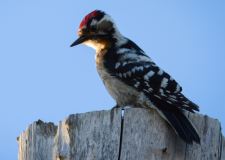Lesser Spotted Woodpeckers in 2022 report

Woodpecker Network Breeding Season Report *
Another interesting and successful year for Lesser Spotted Woodpeckers in 2022. Thanks to the efforts of all our volunteers and collaborators we were able to collect breeding data from 19 nests. These were relatively successful with an average of just over 3.0 young fledged per nest which was the second best season since we started the monitoring in 2015 (8 years in total).
Great Spotted Woodpecker - nest hole orientation
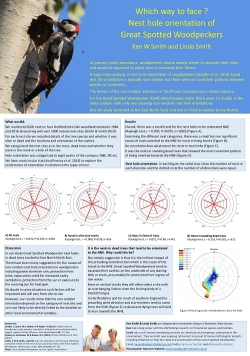
Which way to face ? Nest hole orientation of Great Spotted Woodpeckers
Poster presentation by Ken Smith and Linda Smith for the Hole-nesting Birds Conference held in Oxford from 7-9 September 2022
As primary cavity excavators, woodpeckers choose exactly where to excavate their nests and would be expected to select sites to maximise their fitness.
Is your Woodpecker a Lesser Spot or a Great Spot?
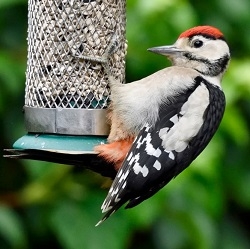
Great Spots are found widely throughout Britain, they are common in woodland and readily visit garden feeders. Lesser Spots are scarce and rarely seen. So you are much more likely to see a Great Spot than a Lesser Spot. But young Great Spots have a red head - don't confuse tham with a male Lesser Spot.
You can easily tell the difference………..
Finding Lesser Spotted Woodpecker nests
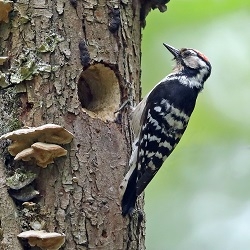
Here are some tips for finding and monitoring woodpecker nests, especially Lesser Spots based on the experiences of our volunteers.
Go to an area where you saw or heard LSW earlier in the year. Spend time in the area and:
Lesser Spot nesting update 28 April 2022
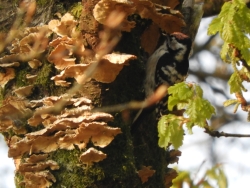
Thanks to all LesserSpotNet volunteers who have been searching for LSW breeding territories and nests as part of our project.
We are now (late April) coming to the end of the peak period of detectability when birds can be found by their calls and drumming. Even during this period, the birds are by no means easy. As our volunteers will know well.
The good news – observers in Devon, the New Forest, Norfolk and Sussex have found Lesser Spots excavating nesting cavities and some look ready for the female to lay eggs.
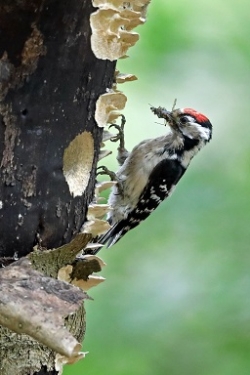 Lesser Spotted Woodpecker by Richard Jacobs 2019
Lesser Spotted Woodpecker by Richard Jacobs 2019 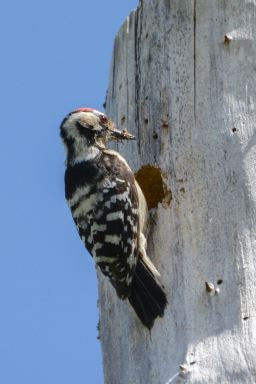 Lesser Spotted Woodpecker © Tim Preston
Lesser Spotted Woodpecker © Tim Preston
Don't confuse juvenile Great Spotted Woodpeckers with male Lesser Spots - they both have red caps!
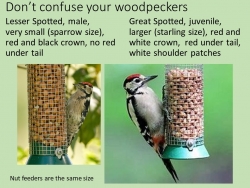
Newsletters
To download our newletters and reports, please use the links below:
Lesser Spotted Woodpeckers in 2019
